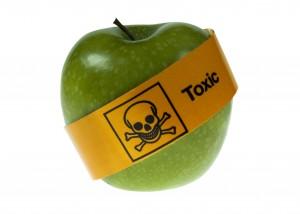When we think of any kind of pesticide, we imagine spraying an infested area with chemicals to kill pests. The only remaining job is cleaning up after them. As long as the chemicals are safe to use and the pests are gone, we don’t give it much thought. But are bed bug pesticides all the same?
In order to kill a bed bug, you first need to understand a little about the biology and toxicology of bed bugs. All pesticides are not equal. Certain pesticides exterminate bed bugs by exposing them to a toxic environment. Other pesticides disturb the bed bug’s environment substantially enough so that they cannot survive under the conditions. The good news is that both ways work.
Here’s a closer look at how different pesticides work to eradicate bed bugs:
Pyrethrins and Pyrethroids
Pyrethrins are a type of botanical insecticide that is derived from chrysanthemum flowers. Pyrethroids are a synthetic chemical insecticide that works like pyrethrins. Pyrethrins and pyrethroids are lethal to bed bugs. Pyrethrins and pyrethroids are the most common bed bug pesticides and some are available in fog form.
Over time, some bed bugs have built an immunity towards pyrethrins and pyrethroids, rendering the pesticides ineffective. Resistant bed bugs may temporarily or permanently relocate to another area or be unaffected by the toxins. When pyrethrins or pyrethroids are ineffective due to built-up immunities, using a combination product that combines different chemical classes into the same product may toxify the bed bugs enough to kill them. Switching to an entirely different class of chemicals may also be effective in eliminating bed bug infestations.
Desiccants
Desiccants work to destroy the environment that bed bugs need to survive. Desiccants, like Say Bye Bugs destroy the waxy, protective outer coating on the back of the bed bug. Two other types of desiccants are diatomaceous earth and boric acid. Bed bugs need to retain moisture for survival. Without the waxy, outer layer, they dehydrate and die. Because desiccants are not a toxin, bed bugs cannot become resistant to them. One of the benefits of desiccants is that they have long-standing effect without forcing bugs to scatter. Desiccants are a silent killer because bed bugs can go about their daily activities unaware that their hydration is being compromised. It is important to know that there are different grades of desiccants. For residential applications, use desiccants that are registered by the EPA and labeled for bed bug control. Desiccants that are intended for use in swimming pools or for food-grade pose an inhalation risk to people and should not be used for residential extermination. Reduce human inhalation risk by limiting application to cracks and crevices.
Biochemicals
Tropical evergreen trees, called Neem trees, grow in Southeast Asia and Africa. Seeds from the Neem trees are cold pressed to produce oil, which contains various compounds that have insecticide properties. Cold pressed Neem oil is the only registered biochemical product for use on bed bugs and it is quite effective.
Ironically, cold pressed Neem oil also has medicinal properties. It is used in making shampoos, toothpaste, soaps, and cosmetics.
Studies show that cold pressed Neem oil that is used either as an insecticide or as a personal grooming product controls adult bed bugs, nymphs, and eggs.
Pyrroles
Currently, there is only one pyrrole pesticide that is registered for use against bed bugs and it is a pro-insecticide, called Chlorfenapyr. This means that its biological activity has to be activated to form another chemical. The new chemical is toxic to bed bugs because it disrupts certain functions in the bed bugs’ cells.
Neonicotinoids
Neonicotinoids are synthetic forms of nicotine that act on the bed bugs’ nervous system, causing nicotinic receptors to fire repeatedly until they fail. Bed bugs that fail to respond to other pesticides because of immunological immunity, may respond to Neonicotinoid pesticides.
Insect Growth Regulators
Two additional chemical classes of pesticides are registered for narrow purposes. Dichlorvos, is registered to be used in small enclosures in pest strip form. Propoxur is registered for commercial use where children are not present.
There’s no one right way to kill bed bugs. Bed bug pesticides come in different forms that are either toxic to them or destroy their environment. All types of pesticides destroy bed bugs in every stage from the egg to the adult and most are safe to use at home and around children. For extreme problems or if getting rid of bed bugs is more than you can manage on your own, call a professional.
If you really want to get rid of bed bugs today try SayByeBugs! It was developed as a safe and highly effective alternative among a sea of products that rarely deliver on their promises.
